When attempting to build a backup or system restore point on Windows 10 or 11, are you encountering VSS insufficient storage errors? Errors due to backup and restore are usually the cause of VSS insufficient storage and it shows in the form of Error 0x8004231f. Low disk space, insufficient shadow copy storage, or improper partition settings may be the cause of the issue. As we roll down to this article, we will break down the ways to Fix VSS Insufficient Storage on Windows 10/11.
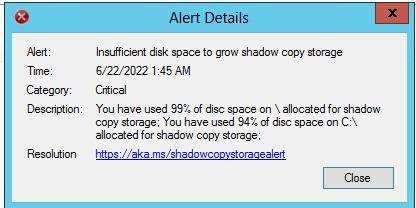
There are practical methods that anyone can use to rectify this problem that will allow the system to function normally again. In this article, we’ll look at true ways to address VSS storage issues and guarantee smooth backup and restoration operations on your Windows computer.
Contents
What is Volume Shadow Copy Service?
Volume Shadow Copy (VSS) is a feature of Windows responsible for making snapshots of files or volumes in real-time. This enables system recoveries and backups without interfering with business as usual. In order for backup software to access the data copy without locking the original files, VSS makes a copy of the data at a chosen moment in time. It allows users to return to earlier states when necessary and is essential for data protection and system stability. To store these copies, VSS uses shadow storage on a disk.
Why Volume Shadow Copy Insufficient Storage Occur?
A crucial Windows feature that enables users to make backups and restore points is Volume Shadow Copy Service (VSS). But if VSS has a problem, it can show the error 0x8004231f, which would make it unable to perform a backup or system restore successfully. Several Windows versions, such as Windows 11, 10, 8, and Server 2022, 2019, 2016, 2012, etc., may have this problem. To properly fix this problem, it is essential to comprehend its causes. The three main causes of VSS error 0x8004231f are listed below.
- Not Enough Storage on Associated Partitions
Lack of free space on the System Reserved Partition or other pertinent partitions is one of the most frequent causes of VSS error 0x8004231f. A snapshot of the system data and settings is saved each time a restore point is made. Because these snapshots use up disk space, the shadow copy operation will not work if the partition is too small.
VSS needs at least 42MB of free space on the System Reserved Partition in order to operate correctly. The issue will occur if this partition fills up since VSS won’t be able to take new snapshots. Frequent use of system backups and restore points can also rapidly exhaust available storage.
- Insufficient Storage Allocation for Volume Shadow Copy
VSS error 0x8004231f could also be caused by the Volume Shadow Copy storage’s specified maximum size being too small. This issue is caused by VSS failing when there is not enough space available to create a shadow copy.
In order to effectively accept shadow copies, Windows suggests that frequently used volumes have 15–25% free space. Failure will result from Windows’ inability to finish the backup procedure if the storage allotment is too low. Using the vssadmin resize shadowstorage command in Command Prompt, you can manually increase the storage allotted for shadow copies to fix this problem.
- Drive Letter Associated with OEM Partition or MSR
One essential system component needed for Windows to boot correctly is the Microsoft System Reserved (MSR) partition. In a similar vein, manufacturers pre-install OEM utility partitions for diagnostic and recovery purposes. Users are not supposed to access or alter these partitions.
Users may inadvertently give these partitions a drive letter in some situations. This may disrupt VSS’s regular functioning, resulting in an inaccurate partition recognition by the system and error 0x8004231f. Windows anticipates that these partitions will stay hidden, and any changes could interfere with system operations.
Users should check Disk Management and delete any drive letters linked to the OEM or MSR partitions in order to resolve the issue. This guarantees that Windows can properly manage system partitions free from superfluous drive letter allocations.
When there is not enough storage space for VSS to produce a shadow copy, the “VSS Insufficient Storage” error appears. This may occur if the maximum capacity allotted for VSS shadow storage is insufficient for the attempted backup or snapshot. This issue may also be caused by insufficient capacity on the system partition, including the system reserved partition. Occasionally, the problem occurs because OEM or Microsoft System Reserved (MSR) partitions don’t have a drive letter, which stops VSS from using them correctly. Increasing the size of the shadow storage, making space on pertinent partitions, or allocating drive letters to MSR/OEM partitions are common solutions for this.
Fix 1: Eliminate Old Shadow Copies to Address VSS Storage Issues
Deleting outdated shadow copies can assist clear up space and fix Volume Shadow Copy Service (VSS) storage problems when a partition has insufficient storage. System files and data are captured as shadow copies, which can build up over time and take up a lot of disk space.
Use these procedures to remove previous shadow copies:
- Type cmd into the search bar and choose Run as administrator to launch Command Prompt with administrative rights.
- To see how much shadow storage is being used right now, enter: vssadmin list shadowstorage. The space allotted to shadow copies will be shown by this command.
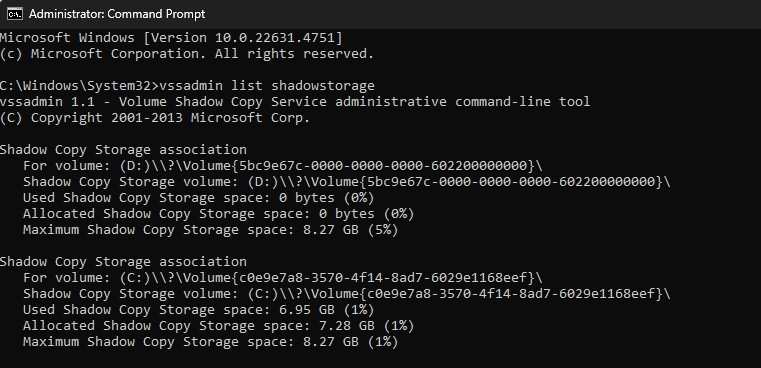
- Run the following command to get rid of every shadow copy from a certain disk (like C: drive): vssadmin delete shadows /for=c: /all
- Use the Arduino to remove a specific shadow copy: vssadmin delete shadows /shadow=[Shadow ID]
- Alternatively, type the following to eliminate just the oldest shadow copy:: vssadmin delete shadows /for=c: /oldest
- After finishing, exit Command Prompt and see if the VSS insufficient storage problem still exists.
You can guarantee effective system performance and avoid storage shortages by routinely managing shadow copies.
Fix 2: Provide More Storage
If your system has enough free disk space but still encounters VSS insufficient storage issues, the problem may be due to a restricted shadow copy storage limit. To resolve this, you can manually allocate more storage for Volume Shadow Copy Service (VSS) using Command Prompt.
Follow these steps to increase the allocated storage:
- Open CMD by pressing Win + S and typing its name. Make sure you open CMD as the admin of the system. Otherwise, the method won’t be fixed.
- Go through the current shadow storage allocation by entering: vssadmin list shadowstorage in the searching area.
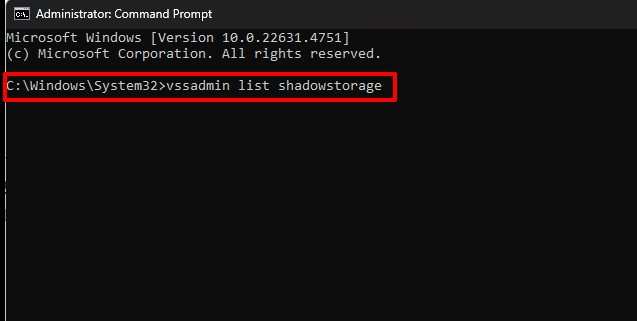
- The current storage settings, including the maximum size limit, will be shown as a result.
- Use the following command to increase the amount of storage allotted, substituting your preferred quantity for 20GB: vssadmin resize shadowstorage /For=C: /On=C: /MaxSize=20GB
- The C: drive’s maximum size for shadow copies is increased by this command.
The system will modify the shadow storage space appropriately when the command is run. You can avoid VSS issues and make sure backup snapshots and system restoration points work correctly by setting aside extra storage. Maintaining system performance and preventing problems with inadequate storage can be achieved by routinely checking and modifying VSS storage.
Fix 3: Change Drive Letters
Storage problems with Volume Shadow Copy Service (VSS) may arise if the Microsoft Reserved (MSR) or Original Equipment Manufacturer (OEM) partition has a drive letter allocated to it. Since they are system-reserved, these partitions shouldn’t have a drive letter. Problems with inadequate storage can be resolved by removing the letter.
To get rid of the drive letter, do the following:
- Right-click on the Start menu and choose Disk Management.
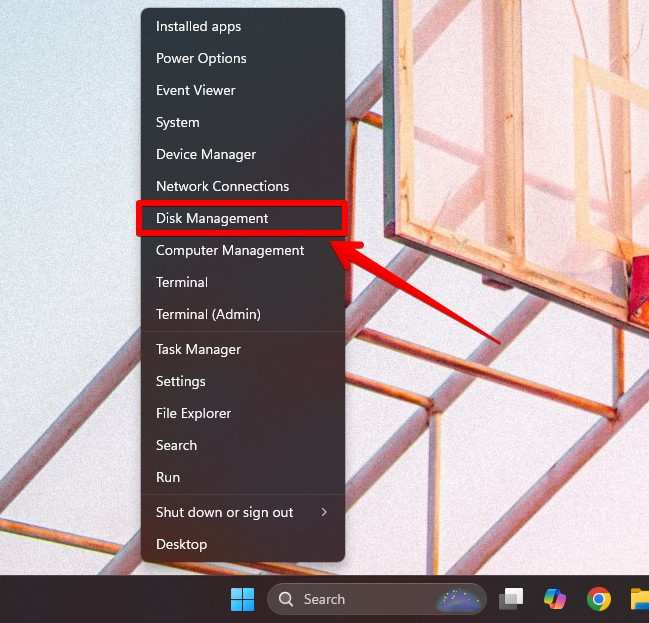
- Find the OEM or MSR partition, then select Change Drive Letter and Paths with a right-click.
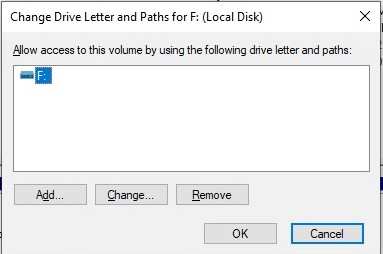
- After confirming the action and clicking Remove, watch for the procedure to finish.
By removing the drive letter, VSS-related issues are avoided because the system will no longer identify the partition as available storage. This small change guarantees seamless VSS operation and helps preserve system integrity.
Conclusion
Common causes of VSS error 0x8004231f include inadequate storage, restricted allocation of shadow copies, or incorrect drive letter assignments on system partitions. Make sure the System Reserved Partition has enough free space, set up enough space for Volume Shadow Copies, and eliminate any extra drive letters from the OEM or MSR partitions to avoid this problem. Users can prevent backup failures and provide seamless system restore functionality by effectively managing disk space and configuring VSS settings. Error-free operation of the Volume Shadow Copy Service depends on proactive storage management and routine monitoring.



